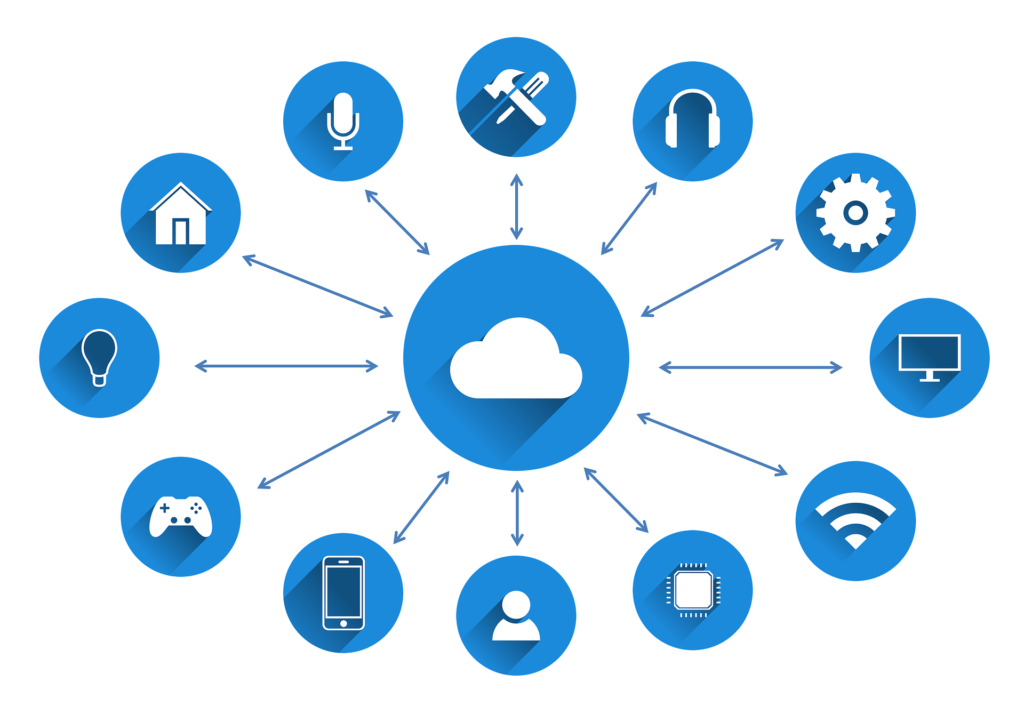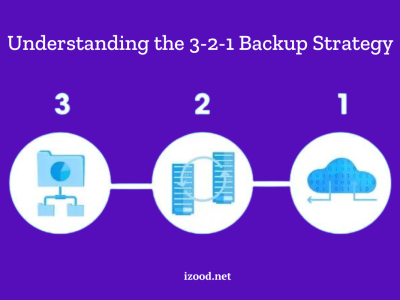
In the digital age, cloud computing has emerged as a revolutionary technology that has transformed the way businesses and individuals store, access, and manage data. This post aims to comprehensively understand cloud computing, covering its definition, benefits, types, and considerations. So, let’s dive into the world of cloud computing and unravel everything you need to know!
What is Cloud Computing?
Cloud computing refers to the delivery of on-demand computing services over the Internet, including servers, storage, databases, networking, software, analytics, and more. Instead of relying on a local server or personal computer, cloud computing allows users to access and utilize these resources remotely through a network of servers located in data centers.
How it Works: Cloud computing works by distributing the workload across a network of interconnected servers. Users can access resources and services on-demand through the Internet. Data and applications are stored securely on remote servers managed by cloud service providers. This enables users to access their files and applications from any location with an internet connection.
Key Components of Cloud Computing:
- Servers: Cloud computing relies on a network of servers to store and process data. These servers are located in data centers managed by cloud service providers.
- Storage: Cloud storage enables users to store and access data remotely. It provides a flexible and scalable way to store large amounts of data without the need for physical hardware.
- Networking: Networking plays a crucial role in cloud computing by connecting different components and facilitating data transfer between servers, applications, and users.
Comparison with Traditional On-Premises Infrastructure
Cloud computing offers several advantages over traditional on-premises infrastructure:
a. Scalability: Cloud computing allows businesses to scale their resources up or down based on demand. This flexibility eliminates the need for investing in additional hardware and infrastructure.
b. Cost-effectiveness: With cloud computing, businesses can avoid significant upfront costs associated with hardware purchases and maintenance. Instead, they can pay for the resources they use on a pay-as-you-go basis.
c. Accessibility: Cloud computing enables users to access data and applications from anywhere with an internet connection. This fosters collaboration and remote work capabilities.
d. Reliability and Availability: Cloud service providers typically offer service level agreements (SLAs) guaranteeing high uptime and availability. This ensures data and applications are accessible and protected from outages and disasters.
Importance of Cloud Computing in Today’s Tech-Driven World

Cloud computing has become essential in today’s tech-driven world due to several reasons:
- Scalability and Flexibility: Cloud computing enables businesses to scale their operations and adapt to changing demands quickly. This agility is crucial in a competitive landscape where organizations need to respond to market trends and customer needs rapidly.
- Collaboration and Remote Work: Cloud computing facilitates collaboration among teams and empowers remote work. It provides a centralized platform where users can access and collaborate on files and applications from anywhere, promoting productivity and efficiency.
- Cost Savings: By leveraging cloud computing, businesses can reduce capital expenditures associated with hardware and infrastructure. They can optimize costs by paying only for the resources they use, avoiding the need for costly maintenance and upgrades.
- Innovation and Competitive Advantage: Cloud computing provides access to cutting-edge technologies, such as artificial intelligence and machine learning. Businesses can leverage these technologies to gain a competitive edge and drive innovation in their products and services.
Cloud Computing Services
Cloud computing services are classified into three main categories: Infrastructure as a Service (IaaS), Platform as a Service (PaaS), and Software as a Service (SaaS). Let’s explore each service model in detail:
Infrastructure as a Service (IaaS)
Infrastructure as a Service provides virtualized computing resources over the Internet. In this model, cloud service providers offer virtual machines, storage, networking, and other fundamental IT infrastructure components on a pay-as-you-go basis. Customers are responsible for managing their applications, data, middleware, and operating systems. Key features of IaaS include:
- Scalability: Infrastructure resources can be provisioned and scaled up or down based on demand.
- Reliability: Cloud providers ensure high availability and fault tolerance of the infrastructure resources.
- Flexibility: Customers have control and customizable options for configuring and deploying their applications.
- Cost-efficiency: Organizations pay for the resources they use, avoiding the need for hardware procurement and maintenance.
Examples of IaaS providers: are Amazon Web Services (AWS) EC2, Microsoft Azure Virtual Machines, and Google Cloud Compute Engine.
Platform as a Service (PaaS)
Platform as a Service offers a higher level of abstraction by providing not only the infrastructure but also the runtime environment and development tools to build, test, and deploy applications. With PaaS, developers can focus on coding apps while the underlying infrastructure and runtime environment are managed by the cloud provider. Key features of PaaS include:
- Greater productivity: Developers can leverage pre-configured development frameworks, tools, and APIs to accelerate application development.
- Simplified deployment: PaaS automates the processes of deploying, scaling, and managing applications.
- Collaboration: PaaS facilitates collaboration among developers by providing shared tools and services.
- Cost-effective: PaaS reduces the need for managing underlying infrastructure, allowing organizations to focus on application development.
Examples of PaaS providers: are Heroku, Google App Engine, and Microsoft Azure App Service.
Software as a Service (SaaS)
Software as a Service offers ready-to-use applications and services accessed over the internet. In this model, users don’t need to worry about infrastructure or software installation, as the provider manages everything. Key features of SaaS include:
- Accessibility: Users can access applications from any internet-connected device without needing local installation or maintenance.
- Easy updates and maintenance: The service provider takes care of updates, patches, and maintenance of the software.
- Scalability: SaaS applications can scale to accommodate user needs without additional effort from the customer.
- Cost efficiency: SaaS eliminates upfront software costs and provides a subscription-based pricing model.
Examples of SaaS providers: are Salesforce, Google Workspace, and Microsoft Office 365.
It’s important to note that many cloud service providers offer a combination of these service models, providing a wide range of services to meet various business needs.
Future Trends in Cloud Computing
Here are some key trends shaping the future of cloud computing:
- Edge Computing
With IoT devices proliferating, more computing is being done at the “edge” of the network to reduce latency and bandwidth usage. This includes things like smart sensors, autonomous vehicles, and augmented reality. Edge computing will be critical for these real-time applications.
- AI and ML in the Cloud
Cloud providers are integrating more AI and ML services into their platforms, allowing developers to easily add things like computer vision, natural language processing, and predictive analytics into applications without having to build custom ML models. This makes AI/ML more accessible.
- Serverless and Containers
Serverless computing simplifies app development by allowing developers to deploy auto-scaling functions and apps without managing servers. Containers like Docker allow for more portable and scalable deployment of apps across cloud platforms and on-prem environments. These technologies simplify cloud deployments.
- Quantum Computing
Quantum computing has the potential to dramatically increase computing power for certain applications by harnessing quantum physics. This could have implications for compute-heavy tasks around encryption, material science, drug discovery, and more. Major cloud providers like AWS, Azure, and Google are starting to offer some quantum computing access.
- Distributed Cloud
Multi-cloud and hybrid-cloud deployments are becoming more popular. Distributed cloud builds on this by allowing workloads to be deployed across multiple cloud data centers, edge locations, and on-prem infrastructure in a mesh architecture. This provides more flexibility and potential cost savings.
In conclusion
Cloud computing has revolutionized the way businesses leverage technology to improve efficiency, reduce costs, and increase scalability. Understanding the key aspects of cloud computing, including its benefits, types, and considerations, is crucial for any organization looking to embark on the cloud adoption journey. By harnessing the power of the cloud, businesses can unlock new opportunities and stay ahead in today’s fast-paced digital landscape. Remember, successful cloud adoption requires careful planning and consideration of your specific business requirements and goals. By staying informed and updated on the latest cloud computing trends, you can make well-informed decisions to leverage the full potential of this game-changing techno











